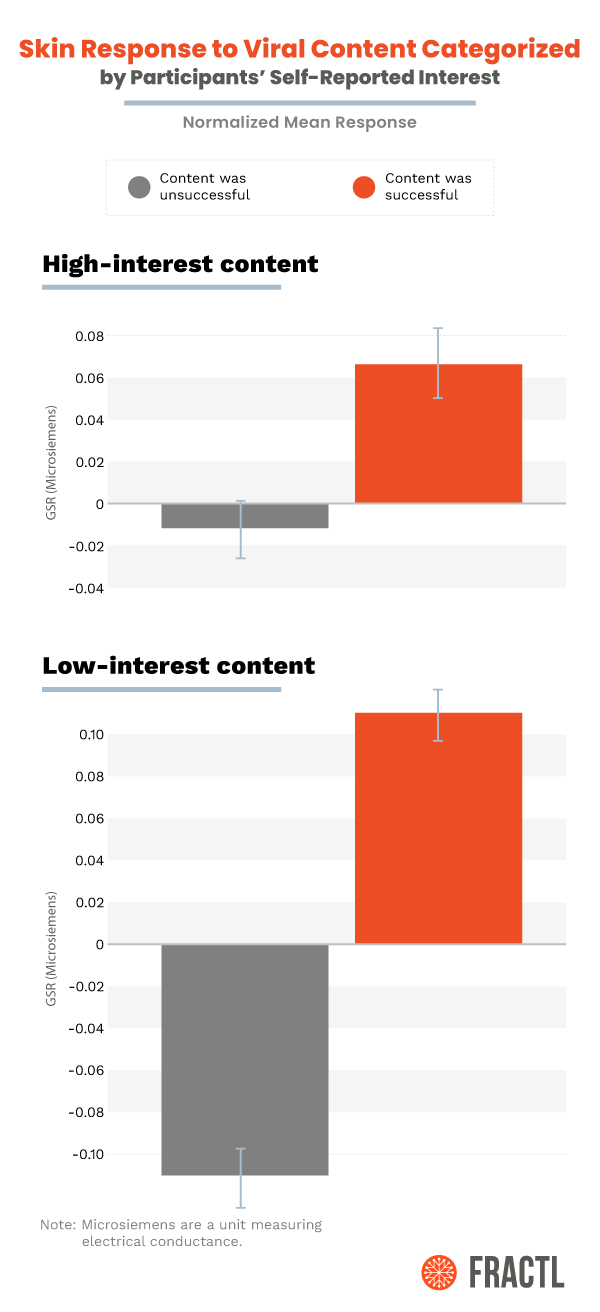Research: How the human body can predict what makes content go viral
A recent study found that measuring the electrical charge on people's skin can predict whether a piece of content will go viral -- but merely asking people doesn't work.
A recent study found that measuring the electrical charge on people's skin can predict whether a piece of content will go viral -- but merely asking people doesn't work.
Whether it’s the “Tide pod challenge“, Mason Ramsey (also known as the iconic Walmart yodeling sensation), or the time when Amazon Alexa lost her voice, viral content is all around us every single day.
While the types of events or stories that go viral appear in many different forms, they all have one thing in common: mass appeal.
Most marketers want to achieve viral success for their brand or business. But when there are so many different tactics that work, it can be hard to define the best strategy for your content idea.
Determining how to make a story go viral is not a perfect science.
Even if a piece of content is well-researched and thorough, even if you’ve nailed down a strategy and execute it perfectly, the disheartening reality remains that your content can still flop.
But, research is showing that there may indeed be some predictability behind what makes content go viral.
In this article, the team at Fractl tells us about a new study they’ve conducted about predicting content performance.
One of the major goals for content marketers around the world is to produce viral content on behalf of their brand or business. There is a lot of research out there on viral content to help marketers with this endeavor. Some favorites to check out if you are new to viral marketing:
Traditionally, the most important metrics marketers use to measure the results of a campaign come from self-reported data.
These methods rely on participants verbally expressing themselves, indicating interest or disinterest in the campaign or its visual assets. While these results are important to analyze, they have the potential to be anecdotal and can be inaccurate and hard to measure.
Instead, our team’s researchers looked to the human body for answers.
In order to determine whether the human body has the ability to react differently to highly successful or unsuccessful content, Fractl used a sophisticated method to predict user engagement for the content they had already produced. They analyzed a metric called galvanic skin response (GSR), a technique that measures emotional arousal.
Galvanic skin response (GSR) is a measure of the changes in the electrical conductance of the skin. As we become more or less stimulated by our environments, our skin becomes more or less electrically charged.
Using a galvanometer, the researchers tracked participants GSR levels as they were presented with various stimuli.
By pinpointing the types of immediate physical reactions to viewing pieces of content, marketers can understand how our bodies and brains actually react to what we see — not just what we are able to verbally describe.
Fractl selected 15 of their best performing pages and 15 of their lowest-performing pages to create a range.
Unsuccessful stories earned an average of 11 social shares while “viral” stories earned ~21,000.
Their testing group viewed the content and self-reported their levels of interest, enjoyment, surprise, and understanding. We asked participants how likely they were to share the content on social media, and how engaging they found the content overall.
While they digested the content, we measured the GSR. Here is what we found.

The more viral a campaign was, the greater the galvanic skin response their participants had while viewing it.
Self-reporting measures were not significantly correlated with viral outcomes. In fact, these metrics did not correlate with how likely the content was to go viral, from whether or not a participant told us they understood the content, how much they enjoyed it, how surprised they were by it, how likely they were to share it personally, or how engaging they found it.
Irrespective of self-reported results, the best predictor of participant arousal is galvanic skin response.
Thanks to modern developments, you can now integrate new and innovative technologies into your market research. By introducing technologies that track biometrics like galvanic skin response, eye tracking, and EEG, previously unattainable insights related to creating viral content can be learned and repeated in the future.
Neurometrics help us get a clearer view into the minds of digital content consumers, helping us to predict what makes content go viral. This type of consumer research that measures electrodermal response can help predict whether your content ideas and stories will reach your target audience and inspire those people to hit that share button.
(You can read more about the study here.)
Domenica is a Brand Relationship Manager at Fractl. She can be found on Twitter @atdomenica.